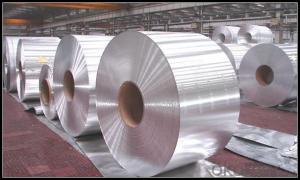Microwaves are a staple in many kitchens, offering a quick and easy way to heat up leftovers or cook a variety of foods. But have you ever stopped to wonder if it’s safe to use aluminum foil in the microwave? The answer might surprise you. This article will explore the safety of using aluminum foil in microwave ovens, the potential risks involved, and some tips for using it safely.
The Science Behind Microwaves and Aluminum Foil
Before we dive into the safety aspect, let’s first understand how microwaves work and why aluminum foil is a concern. Microwaves use electromagnetic waves to heat food by causing water molecules in the food to vibrate, which in turn generates heat. Aluminum foil, being a metal, has unique properties that can interact with these waves in unexpected ways.
When you place aluminum foil in the microwave, it can cause sparks and even fire if it’s not used properly. This is because metal reflects microwaves, and when the waves bounce back and forth, they can create what’s known as an ‘electric arc.’ This arc can heat up the foil to the point of combustion.
The Risks Involved
While the idea of a sparking microwave might seem like a scene from a sci-fi movie, it’s a real concern. Using aluminum foil in the microwave can lead to several risks, including:
– Fire Hazard: As mentioned, the reflection of microwaves can cause sparks, which may ignite the foil or other combustible materials in the microwave.
– Damage to the Microwave: Prolonged use of aluminum foil can damage the microwave’s interior and its components, leading to costly repairs or replacement.
– Health Risks: If the foil were to catch fire or melt, it could release toxic fumes or even small shards of metal into your food, posing a health risk.
When Is It Safe to Use Aluminum Foil?
Despite the risks, there are instances where using aluminum foil in the microwave is considered safe. Here’s when it’s okay to use it:
– Wrapping Small Portions: If you’re only wrapping a small portion of food, the foil is less likely to cause sparks or other issues.
– Ventilated Wrapping: Make sure there are small holes or slits in the foil to allow steam to escape and prevent the foil from catching fire.
– Using Microwave-Safe Containers: Placing the foil-wrapped food in a microwave-safe container can help contain any potential issues.
Alternatives to Aluminum Foil
If you’re looking to avoid the risks associated with aluminum foil, there are several alternatives you can consider:
– Microwave-Safe Cover: Many microwave-safe covers are designed to keep food moist without the need for foil.
– Parchment Paper: Parchment paper is a great alternative to foil, as it’s non-metallic and can withstand high temperatures.
– Silicone Mats: Silicone baking mats can be used to line the bottom of the microwave for easy cleanup and to prevent food from sticking.
Tips for Safe Microwave Use
Whether you’re using aluminum foil or not, it’s important to follow some basic safety tips when using your microwave:
– Avoid Overloading: Overloading the microwave can cause food to cook unevenly and may lead to arcing.
– Use Microwave-Safe Materials: Always use containers and covers that are labeled as microwave-safe.
– Proper Cleaning: Regularly clean your microwave to prevent the buildup of food residue, which can also cause arcing.
– Child Safety: Keep children away from the microwave when it’s in use, and teach them about the dangers of using metal in the microwave.
The Bottom Line
While aluminum foil can be a convenient tool in the kitchen, it’s important to use it wisely in the microwave. By understanding the risks and taking the necessary precautions, you can continue to enjoy the convenience of your microwave without compromising safety. Remember, safety first!

